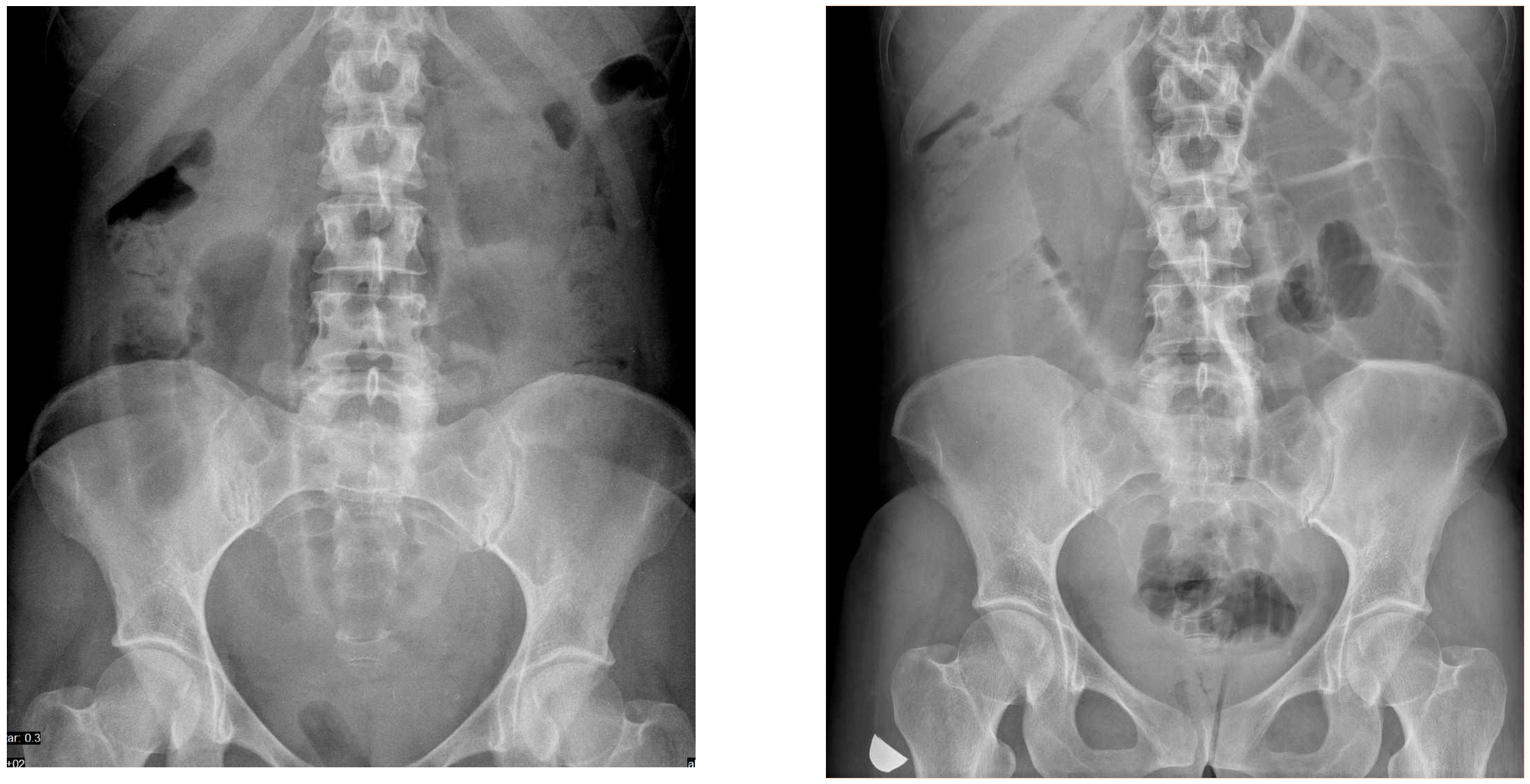this time we are going to move down into the abdomen. This case was shown to me by my good friend Dr José Vizuete (Hospital Universitario Dr Peset, Valencia) and I think that it shows how we should look at images and use all the information included in them.
This is a 39-year-old woman who presents at the Emergency Room with abdominal pain in two occasions.
Case provided by José Vizuete MD. Hospital Universitario Dr. Peset. Valencia. Spain
Solution: Both abdominal radiographs show dilatation of small bowel loops suggesting a small intestine obstruction. There is a subtle finding in both radiographs taken sometime apart: in the lower pelvis (red arrow) you can see the presence of a Tampon. This means that both examinations were obtained during the menstrual period. In the absence of previous surgery, sings of appendicitis or oncological history, repeated abdominal symptoms coinciding with menses should raise the possibility of Endometriosis.


Red arrow shows tampon in both studies providing important clinical information: the symptoms occurred during menses
An ultrasonographic study of the bowel demonstrated the presence of hypoecoic nodules in the bowel serosa (red arrow) a typical finding of this disease.

US examination of the ileocoecal region. A hypoecoic nodule is seen in the outer layer (serosa) of the ileum (red arrow) and the rest of the layers are preserved (white arrow). The bowel loop is distended (ASA PRE) proximal to the Endometriosis nodule (E) and normal distally (ASA POST).
Diagnosis: INTESTINAL ENDOMETRIOSIS
Endometriosis may involve extra uterine structures, mainly around the pelvis, but also I other areas such as the bowel or even the pleura. The endometrial lesions are hypoecoic in ultrasound. In MRI these lesions are hyper intense in T1 and hypo intense in T2 weighted images
Teaching points:
- Look at all the “corners” of the image and use any information present.
- Ultrasound may be useful in the diagnosis of intestinal endometriosis but requires and important level of expertise in the technique of bowel ultrasonography.








Multiple dilated loops of small bowel without air-fluid levels were present both times, suggesting small bowel obstruction (mechanical or adynamic).
I would search the medical records for any previous surgeries (adhesions) or hernias.
The comment about using all information available made me take a closer look at the sacroiliac joints, and their margins are a bit indistinct, so I would probably recommend dedicated views of sacroiliac joints and if they would be consistent with sacroiliitis, look into the possibility of inflammatory bowel disease.
There was no history of surgery or trauma. No oncological problems.
Distended small bowel loops with Rigler sign suggesting pneumoperitoneum.
Abdominal X rays show dilated small bowel loops inthe centre with ill defined mottled gas lucencies in right hypochondrium on both occasions. Large bowel loops are not dilated and return shows air both times. No abnormal radiopaque shadow seen. Soft tissues of bilateral psoas is normal. I would like to do USG abdomen to see for ileocecal thickening.